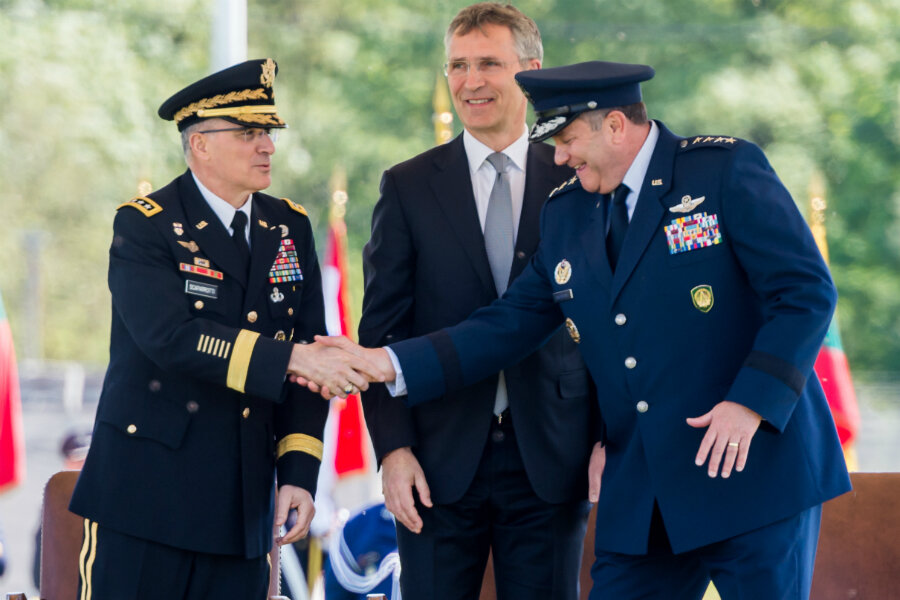How Russia is changing the Pentagon's calculus in Europe
Loading...
| Stuttgart, Germany
Russia’s saber-rattling has once again turned Europe into “a war-fighting command,” Pentagon officials said this week.
The subject of Russia loomed large at the ceremony marking a change of command for American forces in Europe Tuesday. The outgoing commander of United States forces said that, for decades, the American mission in Europe has been “trying to keep the peace” amid a Cold War.
For the past two years, Gen. Philip Breedlove added, he has been trying to prevent a new one.
What that means is a new commitment to Europe militarily. What it doesn’t mean yet, he said, is shutting out Russia entirely as an adversary. Finding that balance is the challenge ahead.
While Defense officials stress that they will hold out the possibility of partnership with Russia down the road, in the meantime the Pentagon is doing what it can to reassure its allies. And it hasn't been above a little saber-rattling of its own.
“In our defense budgets, in our planning, and in our capabilities and in our actions, we must demonstrate to potential foes that if they start a war, we have the capabilities and capacity to ensure that they regret it,” Defense Secretary Ash Carter said Tuesday. “For a force to deter a conflict, it must show that it can dominate a conflict.”
To this end, the Pentagon is putting $3.4 billion into its European Reassurance Initiative, quadrupling the $789 million it requested for the fund last year. This means “more war-fighting gear” and more US troops on the continent, Secretary Carter said. In addition:
- US forces are now planning to post an extra brigade combat team on Europe's eastern flank – typically some 4,000 to 5,000 soldiers – for a total of three brigade combat teams continuously present on the continent.
- The US will ramp up the activities of maritime patrol aircraft in the “Greenland-Iceland-United Kingdom gap” given Russian submarine activity in the North Atlantic, Carter said.
- And to counter the Russian presence in Ukraine, the US is putting more money into Special Operations Forces “exercising and training here in Europe,” Carter said.
Defense officials insist this is not overkill for a US military that has had to steadily draw down forces here since the Berlin Wall fell in 1989.
“With Russia’s aggression in Ukraine, we’re doing things we never did five, six, seven years ago in terms of European reassurance initiatives,” says one senior defense official, who spoke on condition of anonymity.
The new commander of US forces in Europe, Gen. Curtis Scaparrotti, also points to other stresses in Europe. Migrants are “challenging the social structure of Europe,” as he said, and the self-declared Islamic State is threatening more attacks on more European cities.
Those threats require cooperation, and Defense officials say they remain "opportunistic" with regard to Russia.
“Much of the progress we’ve made together since the end of the cold war, we accomplished with Russia,” Carter said. “Let me repeat that: Not in spite of Russia, not against Russia,” he said, “but with it.”
He recalled working with Russia to bring peace to Bosnia in 1995, and again during the war in Afghanistan, to build a supply route for US troops that Russia hosted.
“The United States will continue to hold out the possibility that Russia will assume the role of a constructive partner moving forward,” Carter said, “not isolated and backward in time as it appears to be today.”








